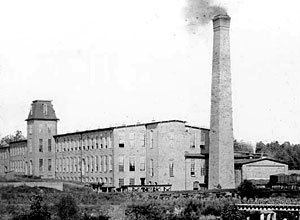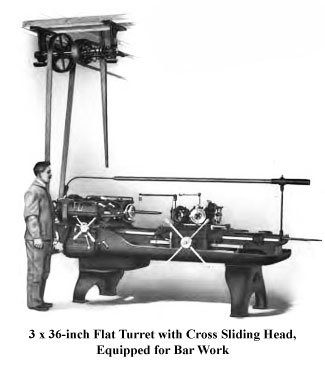Industrialization
Historians have set the first industrial revolution during the eighteenth century and early nineteenth century. During that time, the cotton gin, improvements in steam engines, and the European use of power looms increased industrial efficiency. The period after the Civil War represented a second industrial revolution in the United States due to even more factories being built and soaring innovation regarding new inventions.
 Textile factory. |
A factory or plant is an industrial unit where production takes place. Factories allowed for the mass production of goods and also provided jobs that required training in at least one specific aspect of what was being produced at the factory. Before industrialization, if a man needed a shirt or pair of pants in America, he could have someone sew them or he could order a pair from Europe. Industrialization quickly began to take hold in Europe during the time of the American Revolution as demands for goods like this increased. Those goods were then shipped to America and could be transported around the United States by train. At that time, goods were produced cheaply in Europe but the cost of moving them across the ocean, and over the continent, quickly added to their cost. When the demand for a product is high, mass production allows that product to be produced quickly and sold at a lower cost. This idea caught on quickly in the United States.

Textile factory.
 The first factories in the United States were built earlier in the nineteenth century in the New England area. Most machines used water power to make cloth. Industrialization soon spread to other industries, and by 1860, approximately 140,000 manufacturing businesses operated in the United States. Most of the businesses were located in the Northeast and employed most of the men, women, and children working in the manufacturing industry. Since the early factories used water power to run, they needed to be located near sources of water. Coal, a fossil fuel, replaced water power as a power source; therefore, factories could be located away from running water. The coal industry also provided more mining jobs in Western Pennsylvania. How do you think the industrial revolution affected the environment?
The first factories in the United States were built earlier in the nineteenth century in the New England area. Most machines used water power to make cloth. Industrialization soon spread to other industries, and by 1860, approximately 140,000 manufacturing businesses operated in the United States. Most of the businesses were located in the Northeast and employed most of the men, women, and children working in the manufacturing industry. Since the early factories used water power to run, they needed to be located near sources of water. Coal, a fossil fuel, replaced water power as a power source; therefore, factories could be located away from running water. The coal industry also provided more mining jobs in Western Pennsylvania. How do you think the industrial revolution affected the environment?
 Frederick W. Taylor |
The government subsidized the research and development of tools and dies used to increase the efficiency of machines. Dies are machine parts that allow items to be precision-cut. The development of dies to replace complicated hand work made it possible to manufacture identical parts that could be interchanged. There was public interest in increased efficiency of machines used in factories. Guns were manufactured using tools that ground metals with more precision. Army uniforms were also made more efficiently in textile mills with machines that could standardize size.
Frederick W. Taylor is credited for devising plans that improved industrial efficiency. His scientific management theory was applied in factories all over the U.S. Think about why business owners would want machines that were more efficient and laborers who worked efficiently.